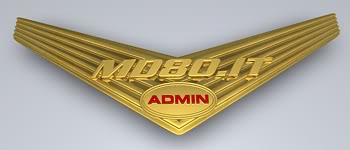neutrinomu ha scritto:peterfly 65 ha scritto:Se non sbaglio il video in questione si riferisce ad un volo prova e a bordo c'erano piloti collaudatori.
Si mi pare sia solo un volo di test con l'aereo telecomandato. Avevo già visto questo filmato in un documentario, anche se non ricordo quale.
Non era telecomandato... era un test effettuato con il primo MD-80 costruito.
piccolo OT per la sezione... (sono più dati da accident analysis..)
ecco la premessa del report di inchiesta NTSB (in inglese, se qualcuno avesse problemi posso farne una sintesi in italiano...)
http://amelia.db.erau.edu/reports/ntsb/aar/AAR82-02.pdf
" while trying to land on runway 22 at Edwards Air Force Base, California.
About 0634 P.d.t, May 2, 1980, a McDonnell-Douglas, Inc., DC-9-80, N980DC,
The aircraft was on a certification test flight to determine the horizontal
distance required to land and bring the aircraft to a full stop as required by
CFR 25.125 when the accident occurred.
The aircraft touched down about 2,298 feet beyond the runway threshold. The
descent rate at touchdown exceeded the aircraft's structural limitations; the empennage
separated from the aircraft and fell to the runway. The aircraft came to rest about
5,634 feet beyond the landing threshold of runway 22 and was damaged subtantially.
Seven crewmembers were on board; one crewmember, a flight test engineer, broke his left
ankle when the aircraft touched down.
The National Transportation Safety Board determines that the probable cause
of this accident was the pilot's failure to stabilize the approach as prescribed by the
lack of a requirement in the flight test procedures for other flight crewmembers to
manufacturer's flight test procedures. Contributing to the cause of the accident was the
monitor and call out the critical flight parameters. Also contributing to this accident
were the flight test procedures prescribed by the manufacturer for demonstrating the
aircraft's landing performance which involved vertical descent rates approaching the
design load limits of the aircraft."
Il test che doveva essere effettuato era il seguente
" The procedures used during this certification test landing were contained on a
McDonnell-Douglas flight card and were, in part, as follows: based on a landing weight of
about 132,500 pounds, the approach speed (Vref) was to be 1.3 Vs (30 percent above stall
speed) and was to be held until 50 feet above the ground (AGL); at 50 feet, the target
descent rate was to be 700 feet per minute (fpm) to 800 fpm and the thrust was to be
reduced to idle; at 25 feet, the landing flare was to be started; and at 0.5 seconds to
0.75 seconds after main landing gear touchdown, full wheel brakes were to be applied.
The target elapsed time to descend from 50 feet to main gear touchdown was to be
4.5 seconds to 5 seconds. The flap setting and computed Vref speed for this landing were
40 degrees and 133 knots indicated airspeed (KIAS), respectively."
Questa l'analisi dei dati registrati dal Flight Data Recorder
"During the descent from 450 feet to 225 feet, the pitch attitude of the
ratios (EPR) were 1.31 EPR on the left engine and 1.30 EPR on the right engine and at
aircraft increased from 4.1'noseup to about 6O noseup. At 450 feet, the engine pressye
this point began to increase. At 275 feet, the left engine was at 1.45 EPR and the right
engine was at 1.44 EPR. Thereafter, the thrust began to decrease, and at 228 feet, both
engines were at 1.25 EPR. During this part of the approach, the descent rate decreased
from 910 fpm to 400 fpm and the airspeed increased from 131 KIAS to the maximum value
recorded-137 MAS at 250 feet AGL. Thereafter, the airspeed began to decrease.
left and right engines were at 1.15 EPR and 1.14 EPR, respectively. These settings were
At 225 feet, engine thrust began another decrease, and at 150 feet AGL, the
maintained down to about 50 feet. Between 225 feet and 50 feet, the pitch attitude
decreased from about 6' noseup and remained fairly constant between 5' noseup and 5.3'
noseup. At 225 feet, the rate of descent began to increase. At 100 feet, the descent rate
airspeed was 132 KIAS and 128 KIAS, respectively.
was about 840 fpm; at 50 feet, it was about 950 fpm. At 100 feet and 50 feet, the
Shortly after descending through 50 feet, the engine pressure ratios began to
decrease, and at 10 feet, both engines were at 1.1 EPR.
When the aircraft touched down,
the airspeed was 125 KIAS and the descent rate was 990 fpm (16.5 fps). About 2 seconds
before touchdown, the trailing edges of the left and right elevators began deflecting
upward, and at touchdown, they had been moved to 17' trailing edge up (TEU)--the
maximum deflection available under these conditions. In response to this noseup input
command, the aircraft began to rotate. Its pitch attitude increased from 5.01' noseup to
6.07Onoseup and the pitch rate was increasing at touchdown.
Calculations based on the aircraft's landing weight and configuration indicated
% establish a constant descent rate of 720 fpm. Analysis of the flight data revealed that,
that at a constant 133 KIAS, a net thrust of 10,700 pounds would have been required to
between 450 feet and 260 feet, the net thrust (Net Thrust = Gross Thrust minus Ram Drag
and Engine Bleed Loss) produced by the engines increased from 11,500 pounds to
5,800 pounds and remained at that value until it was reduced to idle after descending
16,600 pounds. Between 260 feet and 150 feet, the net thrust was reduced to about
increased the descent rate-at a constant 133 KIAS--to about 1,145 fpm."
Come ci ha ricordato Tartan l' MD80 è certificato per un rateo di discesa di 10 f/s, mentre in questo
caso al momento dell' atterraggio aveva un rateo di discesa di 16.5 f/s.
Ciao!












